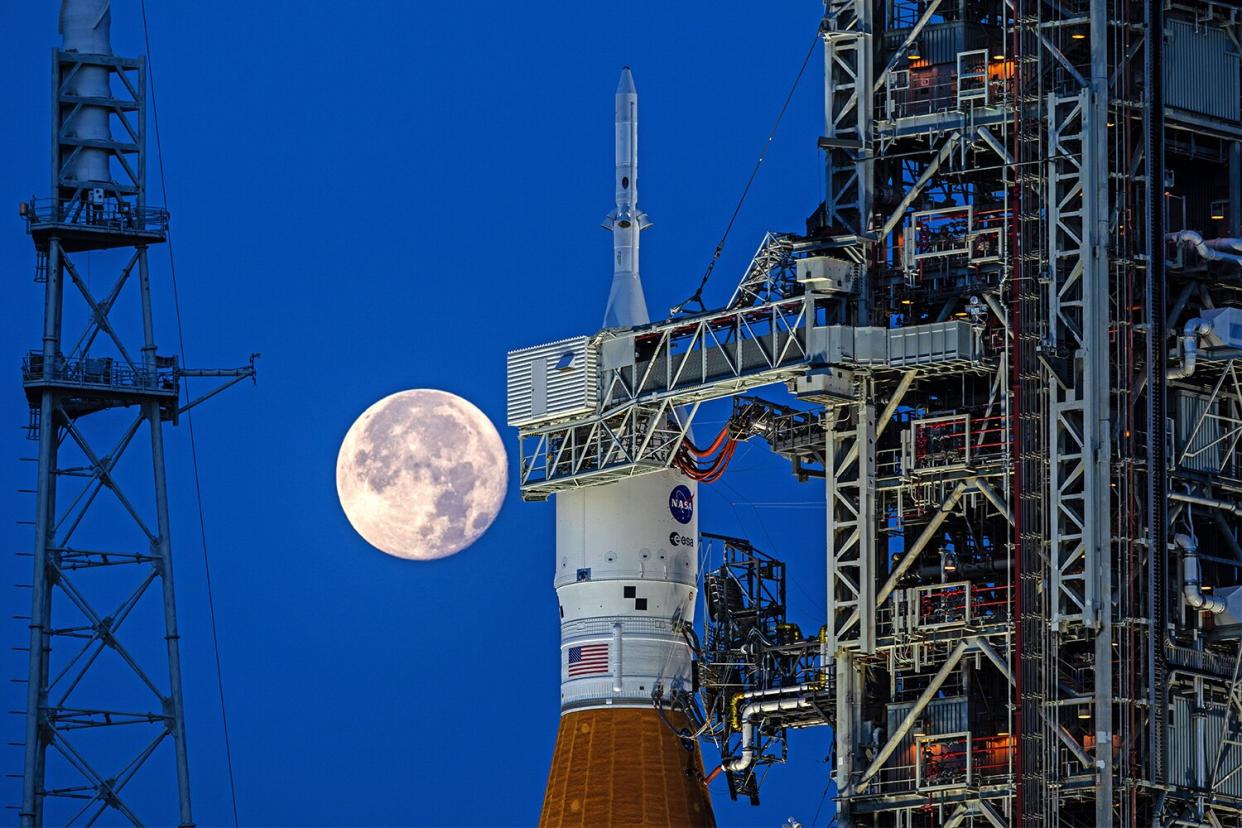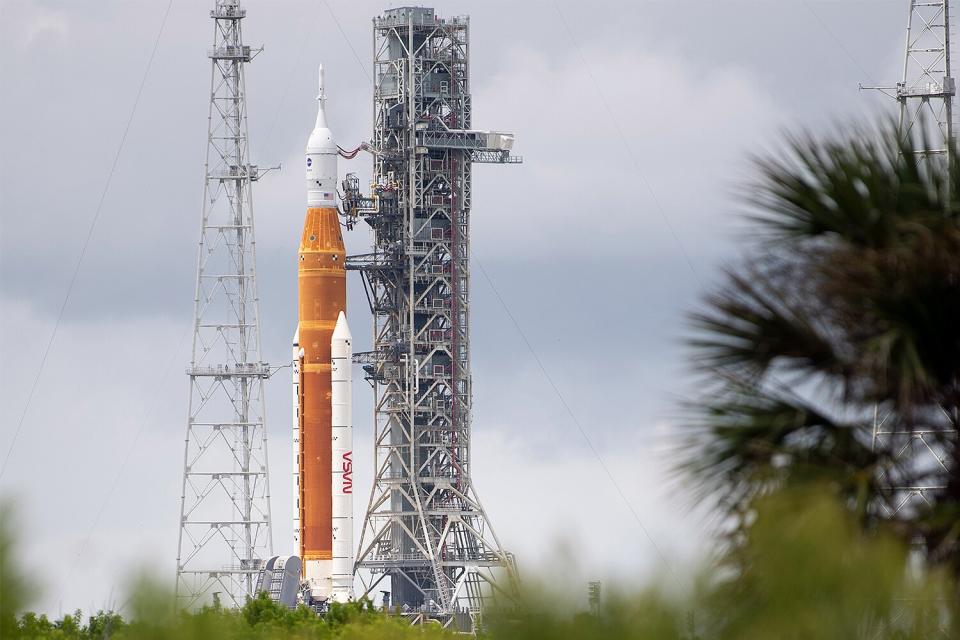NASA Postpones Artemis I Mission Again Due to Fuel Leak Hours Before Scheduled Launch

Ben Smegelsky/NASA
Artemis I is grounded once again.
NASA postponed its mission to the moon Saturday due to a fuel leak hours before the scheduled launch at Kennedy Space Center in Florida, after the original launch was scrubbed earlier this week because of engine issues.
"During tanking of the #Artemis I mission, a leak developed in the supply side of the 8-inch quick disconnect while attempting to transfer fuel to the rocket," NASA announced on Twitter. "Attempts to fix it so far have been unsuccessful."
RELATED: NASA Scrubs Planned Launch for Artemis I Mission to the Moon Due to Engine Issue
They provided another update an hour later: "The #Artemis I mission to the moon has been postponed. Teams attempted to fix an issue related to a leak in the hardware transferring fuel into the rocket, but were unsuccessful. Join NASA leaders later today for a news conference."
At the heart of the Artemis I mission are the Orion, NASA's reusable spacecraft, and the agency's Space Launch System (SLS), the first rocket in half a century designed to fly astronauts to the Moon.
The #Artemis I mission to the Moon has been postponed. Teams attempted to fix an issue related to a leak in the hardware transferring fuel into the rocket, but were unsuccessful. Join NASA leaders later today for a news conference. Check for updates: https://t.co/6LVDrA1toy pic.twitter.com/LgXnjCy40u
— NASA (@NASA) September 3, 2022
Never miss a story — sign up for PEOPLE's free daily newsletter to stay up-to-date on the best of what PEOPLE has to offer, from juicy celebrity news to compelling human interest stories.
According to NASA, the Orion and SLS will fly 280,000 miles from Earth, and thousands of miles past the moon, during a six-week journey.
Once the Orion reaches the moon, the spacecraft will stay in orbit for about six days to collect data and allow mission controllers to test the spacecraft's performance. It will then set a path back to Earth.
During this time, the spacecraft will have remained in space "longer than any ship for astronauts has done without docking to a space station and return home faster and hotter than ever before," NASA said on its website.

Joel Kowsky/NASA via Getty
Artemis 1 is the first of a series of missions planned by NASA in the coming years to expand "human existence to the moon and beyond," per the space agency.
The Artemis mission was named after the Greek goddess of the moon, who is also the twin sister of Apollo, the god of sun and light. Apollo was also the name given to the series of missions that eventually led to astronauts Buzz Aldrin, Neil Armstrong, and Michael Collins reaching the Moon in 1969.
For the second Artemis mission, NASA plans to send astronauts on a different trajectory than the current mission with the goal of testing "Orion's critical systems with humans aboard," according to their website.
RELATED VIDEO: All About NASA's Artemis I Mission, Including How to Watch the Mega Rocket Launch to the Moon
In future missions, NASA plans to land the first woman and first person of color on the moon, which could happen as soon as 2025, per National Geographic. These missions would be the first time NASA sent humans to the Moon since Apollo 17 in December 1972.
The objective of the Artemis missions is to create a long-term, sustainable lunar presence — while also serving as a foundation to eventually send astronauts to Mars, in addition to the moon.

